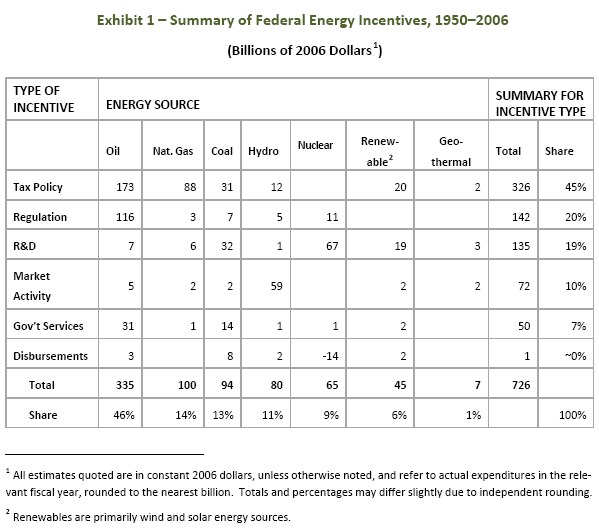A new report details the levels of US taxpayer support given to various energy forms since 1950. Fossil fuels have received far more than nuclear power, which was the only source to actually pay back to government.
To better understand the history of US federal energy expenditures, the US Nuclear Energy Institute (NEI) asked economic research and management consulting firm Management Information Services Inc (MISI) to develop a comprehensive profile of incentives employed as instruments of federal energy policy.
US government spending on the future potential use of nuclear fusion for energy fusion as well as atomic weaponry were excluded from the reasearch. The report showed that nuclear energy has received a total of $79 billion between 1950 and 2006, primarily in research and development ($67 billion), but also for regulation ($11 billion) and government services ($1 billion). Nuclear power received no market support or tax breaks.
However, offsetting this sum of support was the $14 billion surplus in the Nuclear Waste Fund, which US nuclear generators pay into for each unit of nuclear electricity they generate. This $14 billion surplus beyond what is needed to manage radioactive wastes is effectively a contribution back to the government, the report said, and it took nuclear power's net support to $65 billion. Nuclear power was the only energy source to pay back to the US government even indirectly in this way.
 |
Summary of Federal Energy |
Of low-carbon power sources, the figure for hydro was $80 billion with renewables reaching $45 billion and geothermal $7 billion. The report concludes that "the common perception that federal energy incentives have favoured nuclear energy at the expense of renewables, such as wind and solar, is not supported by the findings of this study."
Information was compiled from publicly-available budget documents prepared by federal agencies (such as congressional budget summaries, requests, justifications, revisions and program defences) with a role in energy development. These include the Department of Energy (DoE) and its predecessors, the Nuclear Regulatory Commission (NRC) and the Office of Management and Budget (OMB).
The US government has employed a variety of incentives to encourage the development of domestic energy resources. Incentives for energy have taken many forms, including direct subsidies, tax concessions, market support, technology demonstration programs, R&D programs, procurement mandates, information generation and dissemination, technology transfer, directed purchases, and government-funded regulations.
Overall, the US government has provided an estimated $724.8 billion for energy developments since 1950. The largest type of incentive has been tax concessions, amounting to about 45% of all incentives, followed by federally-funded regulation and R&D, accounting for about 20% of the total each.




_47120.jpg)
_23621.jpg)

_63865.jpg)





